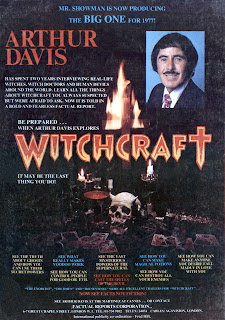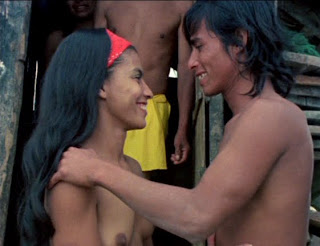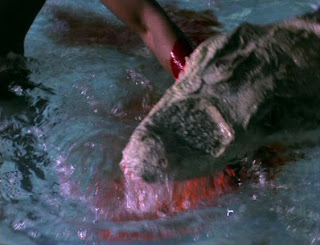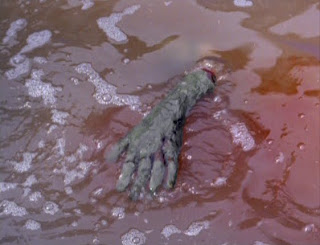
Reviewed by Nathaniel Poggiali
The crime-fighting gentleman thief Simon Templar, alias The Saint, was the creation of Chinese-English author Leslie Charteris and first appeared in the novel Meet the Tiger! (1928). Templar’s adventures would extend to nearly 40 books, as well as a series of feature films (with George Sanders and Louis Hayward assuming the role), a popular radio show (starring Vincent Price), and two ITC programs, the first of which made a star out of Roger Moore. The literary Saint was a vigilante who fought for justice, but his casual arrogance and impulsive violence gave the character an edge that his fictional contemporaries lacked.
As the series progressed the author softened his protagonist, so that by the time of The Saint’s television debut, Templar had become comfortably predictable. Charteris maintained strict control over the brand, however, and as part of the television contract he was sent each script for review, though his ideas were rarely incorporated. During the fifth season the creative team moved away from adapting his stories, and Charteris was none-too-pleased with the results. He sent a series of acerbic, often hilarious letters to producer Robert S. Baker, excerpted in Burl Barer’s terrific The Saint: A Complete History in Print, Radio, Television, and Film…. “The kind of farrago of lurid nonsense and hackneyed maneuvers that any writer … could slapdash out in half and hour with the aid of a couple of highballs,” Charteris wrote of one episode (qtd. in Barer 145). As much as he panned the scripts, however, the author was enthusiastic about John Kruse’s work: Of Kruse’s “The Fiction Makers,” he wrote that the dialogue had a “crisp sparkle which has all too often been lacking in other scripts … simply a splendid job” (136).
In 1967 Charteris needed new material for the struggling Saint Magazine. He enlisted former university instructor Fleming Lee, who he met during a Mensa gathering near his home in Florida, to adapt Kruse’s teleplays of “The Gadget Lovers,” “The Death Game,” and “The Power Artist,” and revised them for publication (the stories were later included in The Saint on TV and The Saint Returns, both 1968). Charteris and Lee continued their collaboration with a novelization of “The Fiction Makers,” a two-part episode directed by genre vet Roy Ward Baker and given a theatrical release outside the U.S. (where it premiered on THE CBS LATE MOVIE on January 23, 1976).
Kruse’s teleplay spoofs James Bond using the adventures of fictional superspy Charles Lake: the villains are a team of crooks that have patterned themselves on Lake’s nemesis Warlock and his terrorist organization S.W.O.R.D. (think Blofeld and SPECTRE). The hugely successful Lake novels are penned by Amos Klein, the nom de plume of perky young Amity Little. Amity has been sent a letter offering £50,000 for an undisclosed assignment by “Warlock,” and Templar assumes the identity of Klein to investigate. Both he and Amity become prisoners of S.W.O.R.D., with Templar/Klein forced into planning the robbery of a heavily-guarded underground depository.
Considering the cleverness of its set-up, much of “The Fiction Makers” misses the mark. The script’s parody of James Bond (the plan to loot an isolated depository and the “multi-laser destructor” are straight out of GOLDFINGER) seem tired, even for 1968. The concept of an antagonist assembling his “business” of criminals based on a work of fiction has fascinating possibilities that are never explored. Instead, once Kruse has revealed the intentions of Warlock and S.W.O.R.D., the script becomes a routine, even dull, heist thriller, with only Moore’s charisma and some funny lines (“You have forty-eight hours in which to solve the problem, or else we shall invoke Chapter 12 of Volcano Seven!”) to keep the material afloat. Though the story depicts the insane plot of a man enamored of the international spy genre, it is confined mostly to an English country mansion – a fact that probably has more to do with the show’s limited budget than deliberate irony.
The novelization is a pleasant surprise then, a mostly excellent work that remains faithful to the source but adds texture and detail, maintaining the high quality of Charteris’ previous fiction. The novel fills plot holes and drops material that didn’t work. In the television version the viewer was left wondering why a group of criminals would be loyal to Warlock and his loony plan; in the novelization, Templar speculates that Warlock’s men were sprung from prisons and blackmailed into following orders. The authors eliminate a weak twist that has Templar and Amity seeking help from Warlock’s neighbors (only to discover, quite predictably, that the neighbors have notified S.W.O.R.D. of their whereabouts). The climax -- which has Templar racing back to the mansion to prevent Amity’s demise by laser destructor – generated little suspense onscreen thanks to flat direction and editing, but Lee and Charteris make the scene tense and exciting.
Though Lee read several Saint books and made an effort to imitate Charteris’ literary style, he said the “humor and characteristically amusing turns of phrase were not things [he and Charteris] could plan or even discuss … they could only happen because of our psychic affinity, which manifested itself also in a lot of common interests and attitudes” (qtd. in Barer 166). With adjustments from Templar’s creator -- “sentences, paragraphs … occasionally whole pages,” (167), Lee said – the writing was made consistent with previous Saint adventures. The following is a good example of Charteris’ typically off-center approach:
The Saint had never been fond of things on grounds of rarity
alone. He had never been excited by eclipses of the moon nor
had his pulse quickened at the sight of a six-legged calf. But of
all the things which the Saint did not like because of their
rarity, he liked least the rare experience of being bashed with
some firm artifact on the back of his skull. (Charteris 28)
If Templar himself remains the witty but uncomplicated hero of later works in the series, the novel deepens and expands Warlock’s presence. First described as having a countenance that produces thoughts of both Father Christmas and “certain Roman emperors who were given to killing their friends and relatives in moments of pique” (59), Warlock is an intense and unsettling villain in the novelization, and his fanatical devotion to Amos Klein/Amity Little’s writing makes more sense. Charteris and Lee include a scene where Warlock relates his childhood experience of arranging two armies of lead soldiers for battle, only to burst into tears when reminded that the figures could not move. The love of escapism stems from Warlock’s belief that it will help the S.W.O.R.D. leader realize his potential, however corrupt: “… It is very difficult for heroism and grand action these days … in books like yours … [there is] a glimpse of a way of life in which men use themselves to the full” (85). Though Lee and Charteris have Templar deflate this reasoning with a sarcastic quip, they see Warlock as something more than a plot contrivance.
Also intriguing are possible references to the authors’ unhappy experience dealing with the show’s creative team. In several letters to Baker, Charteris wrote about his disappointment with story editor Harry W. Junkin (who receives credit for “additional scenes” in “The Fiction Makers”), and Lee blasted Junkin for his tendency to “eliminate the brightest and most original bits and install Hollywood clichés in their place” (qtd. in Barer 167). In dialogue original to the novelization, Warlock identifies himself as an admirer rather than a practitioner of “creative imagination.” Is Warlock meant to be Lee and Charteris’ depiction of Junkin?
Everything is exactly as you described it in your books. Not one
detail is missing … though I must flatter myself in telling you
that in transforming an author’s fantasies into reality, however
thorough and brilliant the author may be … one nevertheless
discovers that some details have been overlooked in the books
and must be supplied by the practical man.(Charteris 60)
The Saint and the Fiction Makers had its first publication in the U.S. for The Crime Club, an imprint of Doubleday. The U.K. edition from Hodder & Stoughton appeared in 1969.
Works Cited
Barer, Burl. The Saint: A Complete History in Print, Radio, Film and
Television of Leslie Charteris’ Robin Hood of Modern Crime,
Simon Templar, 1928-1992. Jefferson, N.C.: McFarland & Co.,
1993. Print.
Charteris, Leslie. The Saint and the Fiction Makers. Teleplay by John
Kruse and Harry W. Junkin. Adapt. Fleming Lee. Garden City,
N.Y.: Doubleday & Co., 1968. Print.


















































